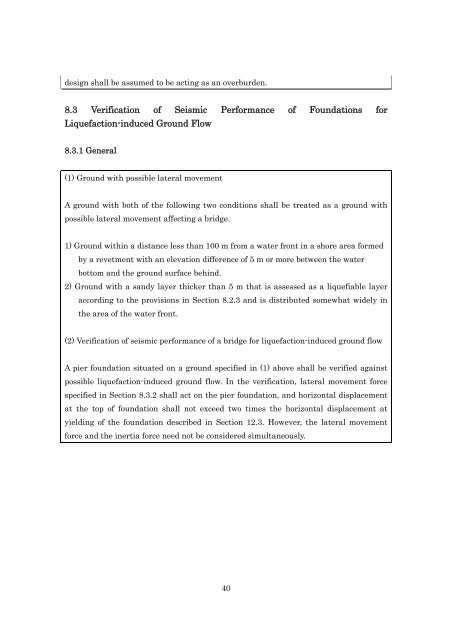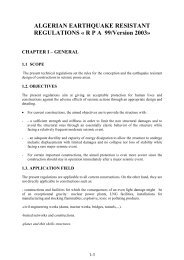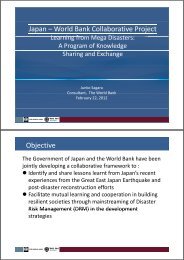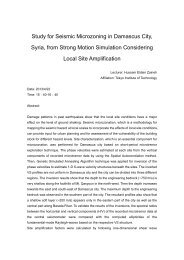DESIGN SPECIFICATIONS FOR HIGHWAY BRIDGES - IISEE
DESIGN SPECIFICATIONS FOR HIGHWAY BRIDGES - IISEE
DESIGN SPECIFICATIONS FOR HIGHWAY BRIDGES - IISEE
You also want an ePaper? Increase the reach of your titles
YUMPU automatically turns print PDFs into web optimized ePapers that Google loves.
design shall be assumed to be acting as an overburden.<br />
8.3 Verification of Seismic Performance of Foundations for<br />
Liquefaction-induced Ground Flow<br />
8.3.1 General<br />
(1) Ground with possible lateral movement<br />
A ground with both of the following two conditions shall be treated as a ground with<br />
possible lateral movement affecting a bridge.<br />
1) Ground within a distance less than 100 m from a water front in a shore area formed<br />
by a revetment with an elevation difference of 5 m or more between the water<br />
bottom and the ground surface behind.<br />
2) Ground with a sandy layer thicker than 5 m that is assessed as a liquefiable layer<br />
according to the provisions in Section 8.2.3 and is distributed somewhat widely in<br />
the area of the water front.<br />
(2) Verification of seismic performance of a bridge for liquefaction-induced ground flow<br />
A pier foundation situated on a ground specified in (1) above shall be verified against<br />
possible liquefaction-induced ground flow. In the verification, lateral movement force<br />
specified in Section 8.3.2 shall act on the pier foundation, and horizontal displacement<br />
at the top of foundation shall not exceed two times the horizontal displacement at<br />
yielding of the foundation described in Section 12.3. However, the lateral movement<br />
force and the inertia force need not be considered simultaneously.<br />
40








